Zagreb in 24 Hours: Cruising Through the Capital
28 April 2022 - Many people associate Croatian tourism with its famous coastline and sunny beaches. But the nation’s capital is an underrated gem. Here, I show you the best way to visit Zagreb in 24 hours.
Zagreb is the capital and the largest city of Croatia, with a rich history dating back to Roman times. Described by locals as a "big town disguised as a small city", Zagreb is a mix of Western Balkan and central European culture with laid-back, youth-led rhythm. Walking down the promenades, visiting the outdoor market, and drinking coffee in its vibrant settings, this 24-hour itinerary will have you feeling like a local in no time. From historic locations to museums to a bar crawl, everything covered is within the centre of Zagreb, at most a short tram ride away.
10.00 a.m-13.00 p.m.
Get a good start to the day by walking around the centre of Zagreb, where you’re going to want to pass through some of the iconic walking spots like Tkalčićeva street, where you can also stop for a quick coffee or drink at one of its many open cafes.
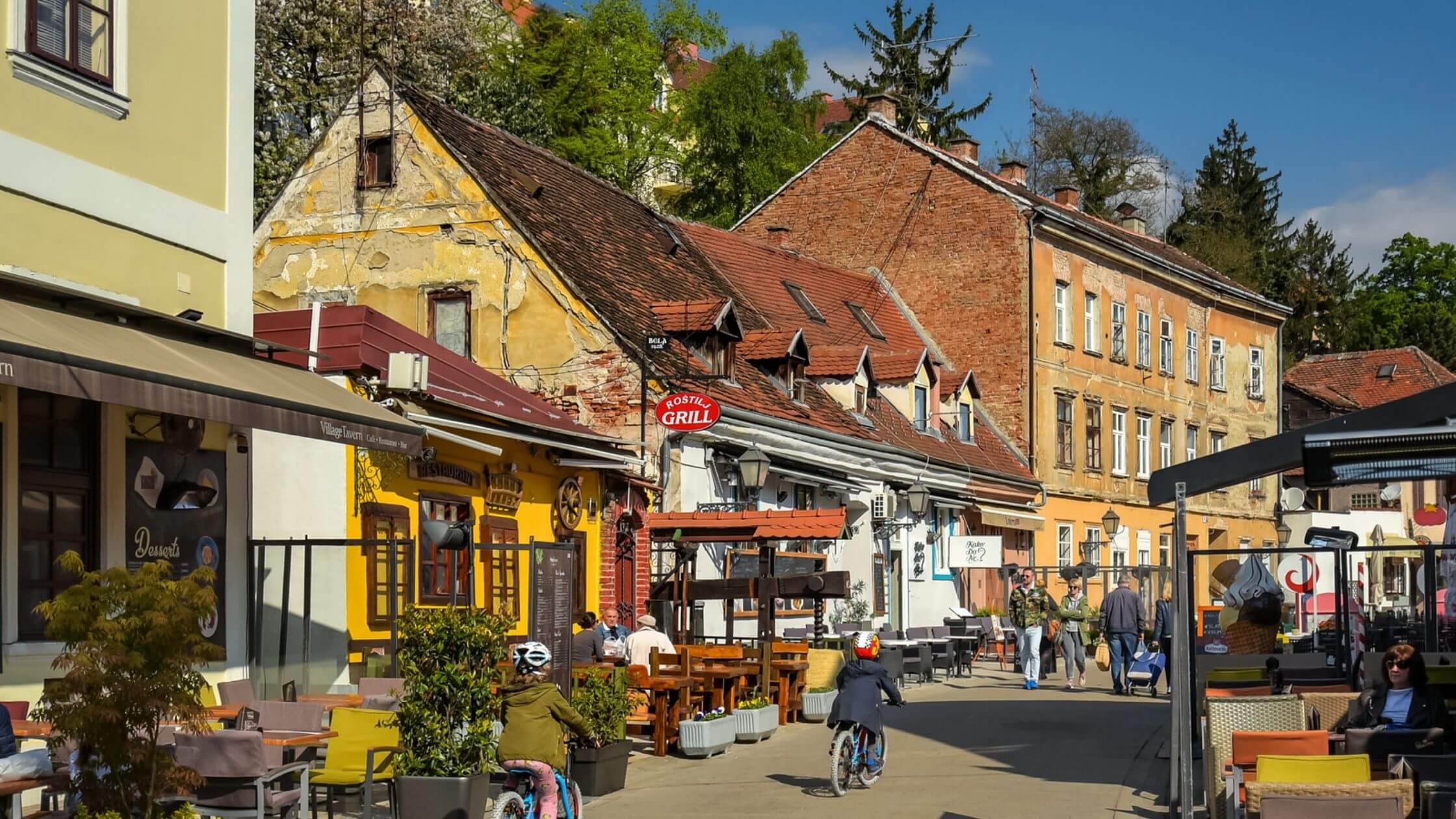
Image: Jorge Franganillo/Flickr
If you find yourself hungry right away, stop for breakfast or brunch at the nearby Otto & Frank. Definitely go for their signature dish, the Zagreb Breakfast - Zagreb’s answer to a traditional breakfast dish complete with toasted bread, cottage cheese, and crispy poached eggs. Their menu contains other brunch staples from oatmeal to French toast, many of which are veggie.
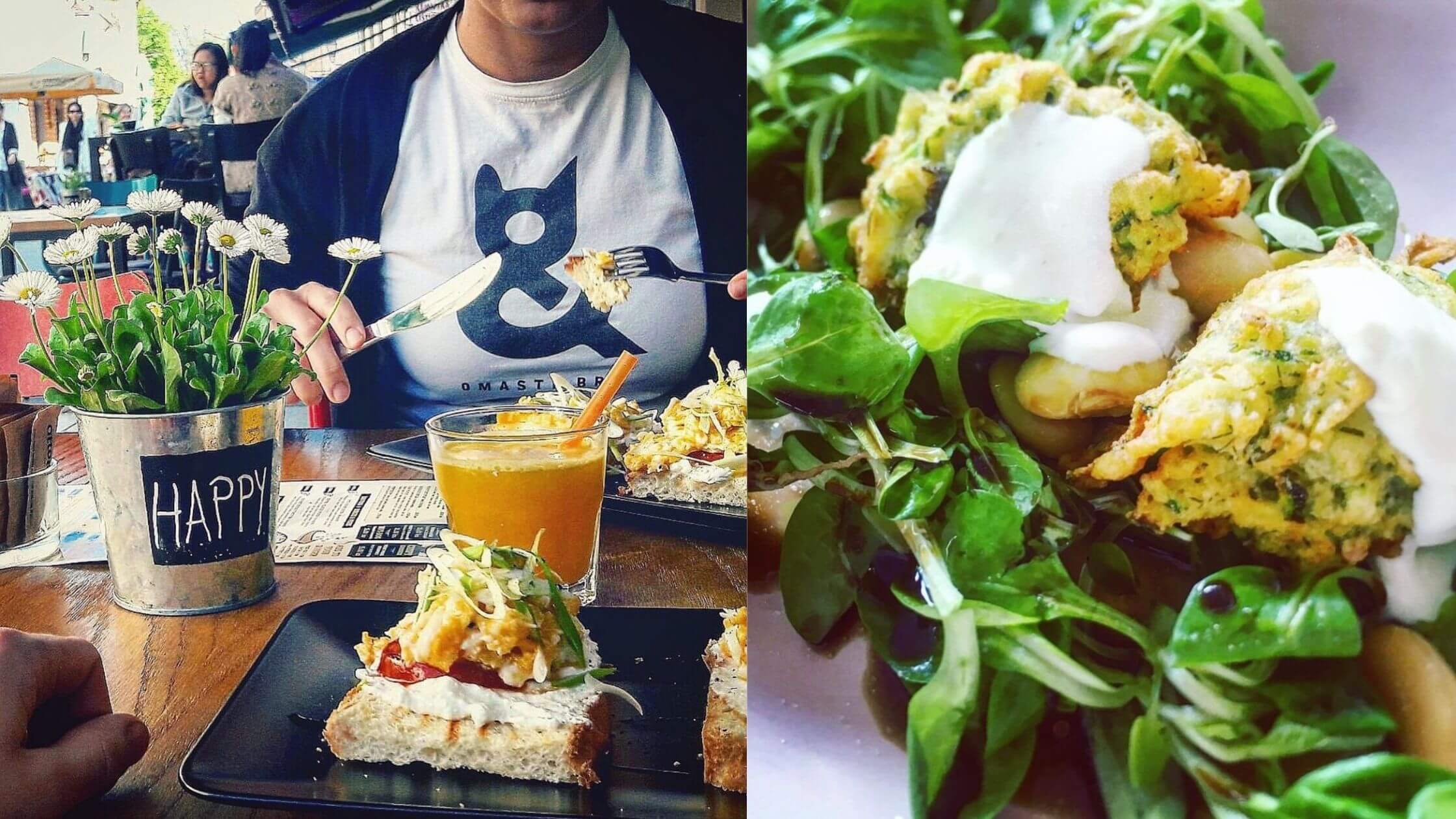
Image: @otto_frank_bar/Instagram
Alternatively, go for a coffee at Mala Kavana, a coffee shop/brunch place overlooking the Josip Jelačić main square. Zagreb is home to its own coffee culture - sitting at a vibrant open space with a strong coffee and a friend is part of the ZG lifestyle. And for this packed day, I have planned for you, you're gonna want to fuel up on caffeine.
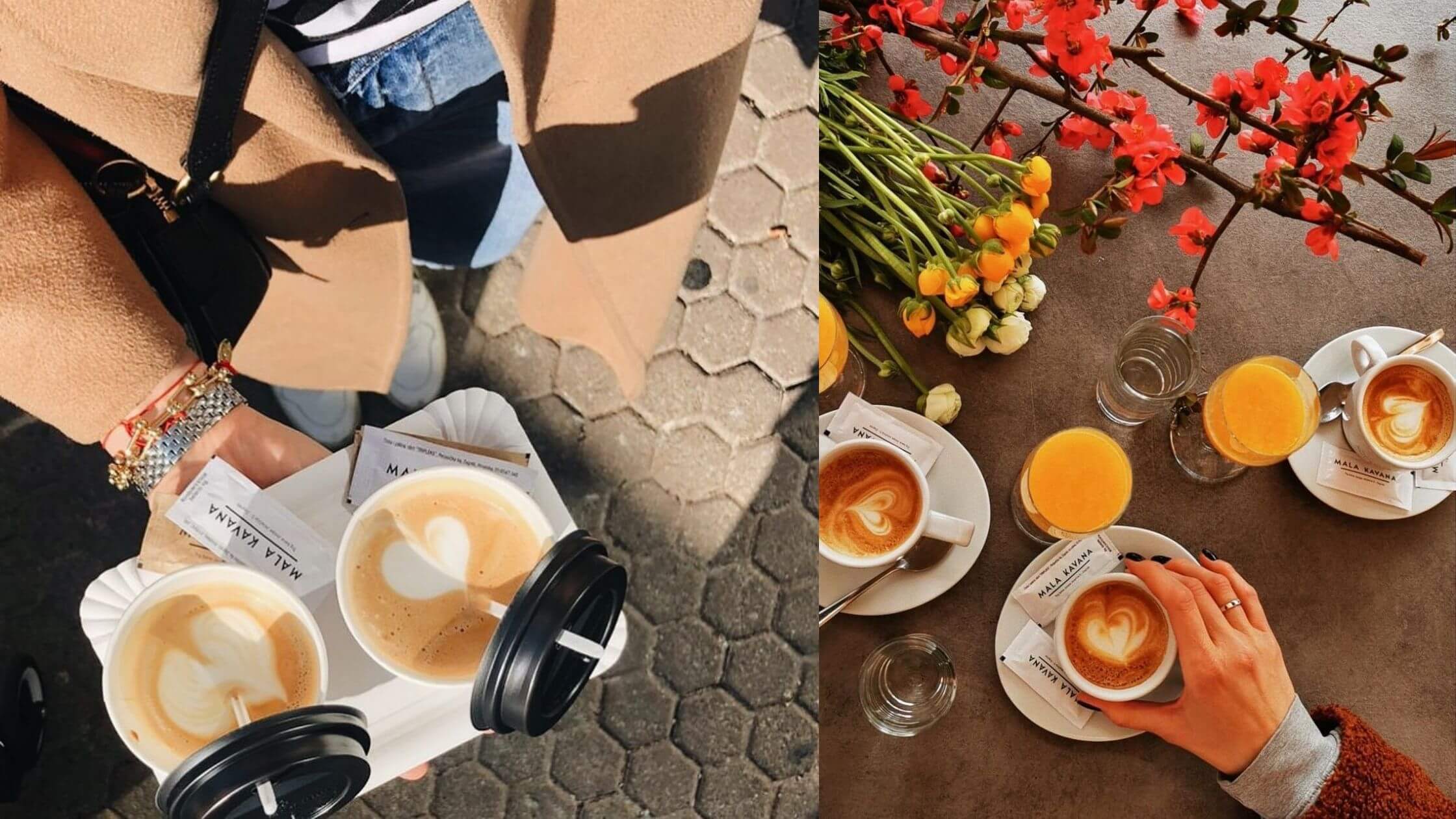
Image: Mala Kavana/Facebook
And if you prefer to eat on the go, quickly grab a pastry from one of Zagreb’s bakery chains such as Dubravica or Dinara - the nearest in the centre being in Dolac, from which you may detour towards the end of Tkalčićeva. An iconic place of Zagreb culture, the open-air farmer’s market is where traders from all over Croatia sell their locally grown produce, from fresh fruit and vegetables to different types of cheese. The market also has a butchery and fish market, in addition to pasta vendors, gift shops, and flower stalls.
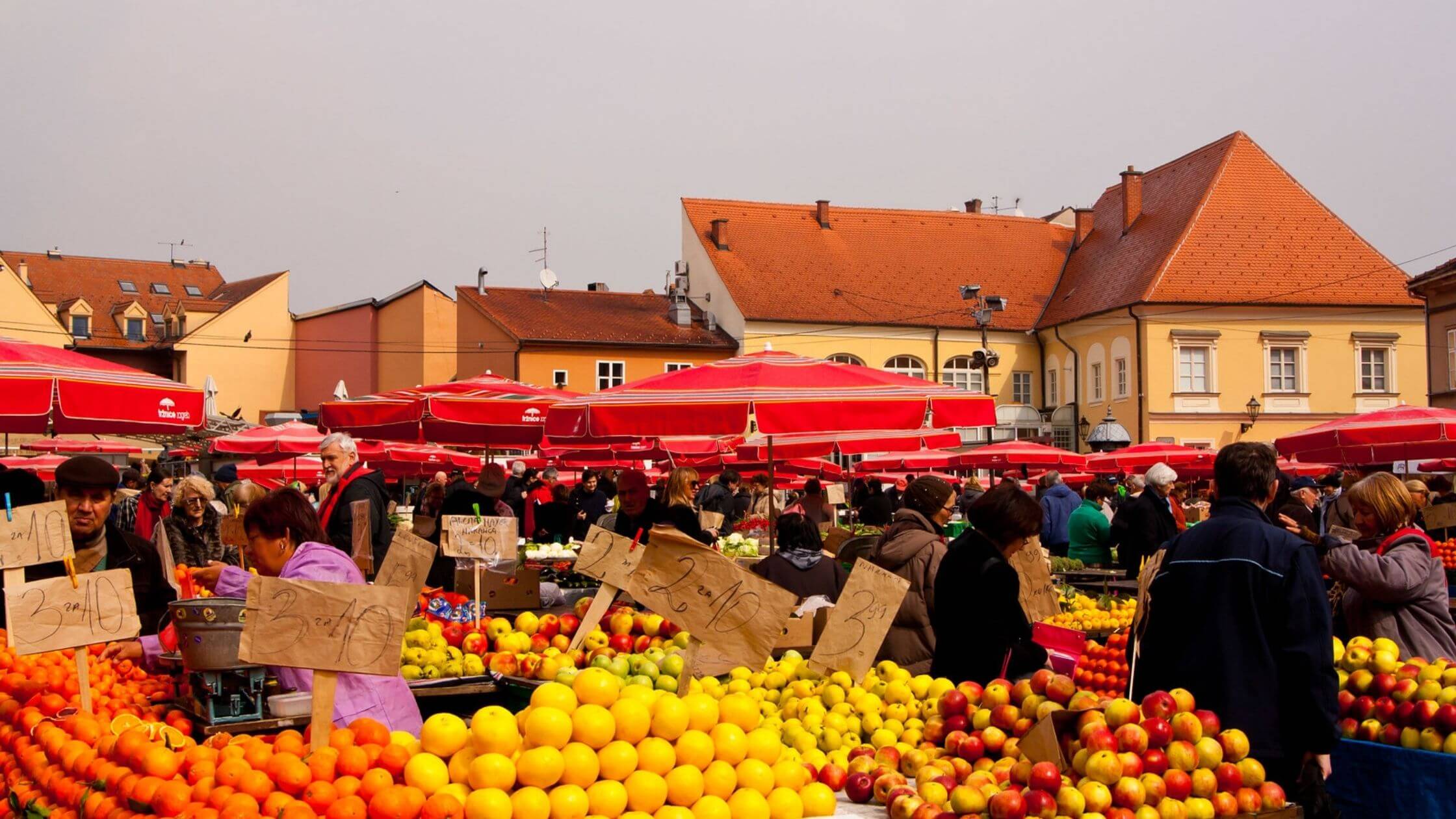
Image: Jerome Rondeau/Flickr
13.00-15.00 p.m.
You definitely will want to hit one of Zagreb’s museums, whether it’s one of the art galleries like Klovićevi dvori, or the more one of a kind ones, like the Museum of Naive Art, the Museum of Broken Relationships, or the Zagreb 80s Museum, all within walking distance of the upper town. Or, the quirky Museum of Illusions in Ilica or the Chocolate Museum in Varšavska street (near the Cvjetni square). The appeal of Zagreb museums is not only its diverse range and creative design, but also its prices and accessibility. Tickets can be bought upon entry, and are usually at an average price of 50kn per adult.
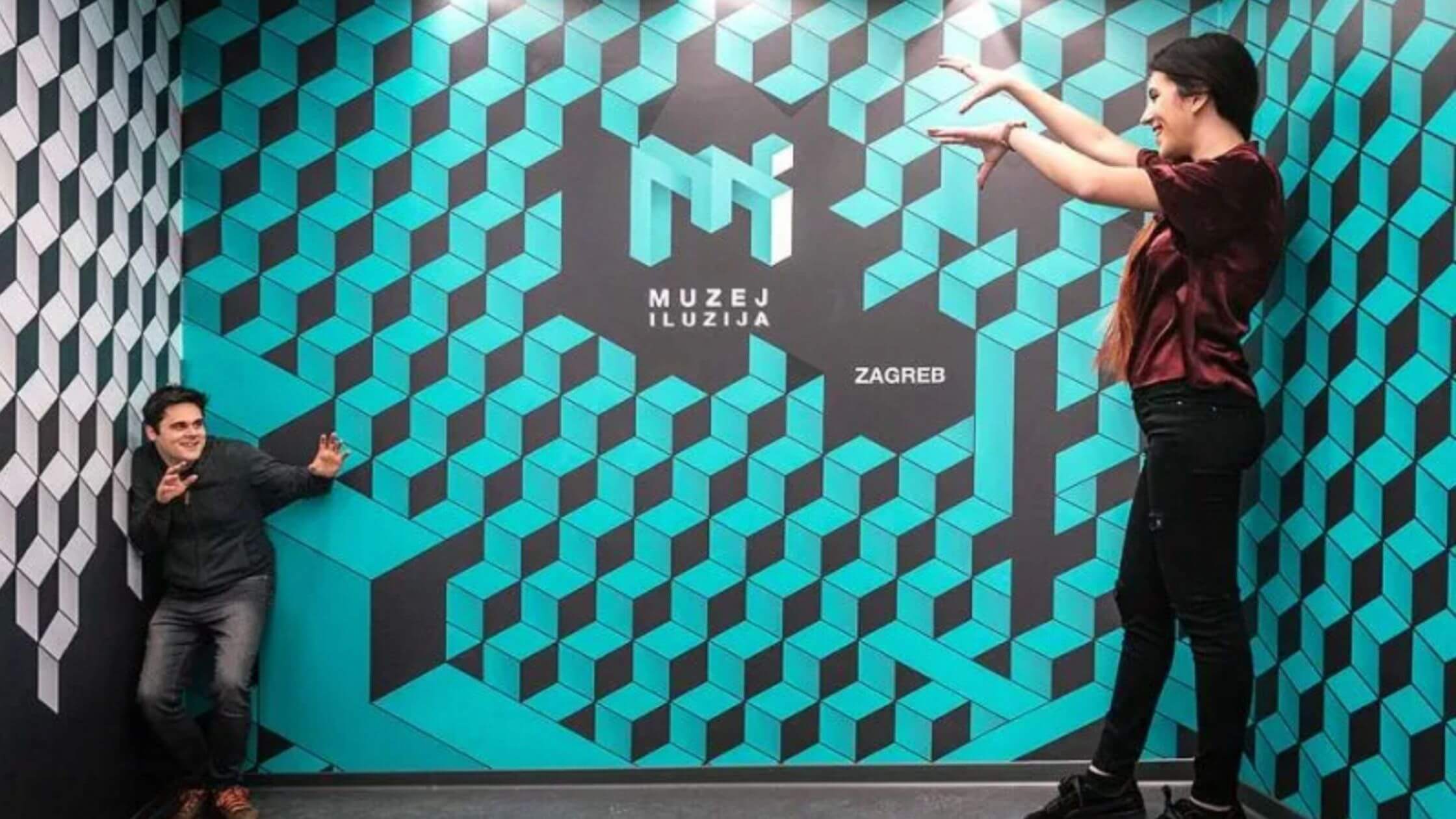
Image: muzejiluzija.com
15.00-17.00 p.m.
From the upper town, head from one of the former museums to some of Zagreb’s historic landmarks, from St. Mark’s Church, to the Strossmayer Promenade, the idyllic walking space of the Zagreb upper town complete with a panoramic view of the city, and the location of the historic Grič cannon and the world’s shortest funicular - Zagreb’s first and oldest means of public transport. Connecting Strossmayer to Tomićeva street, this short and sometimes even deemed "pointless" ride is nonetheless a must when visiting Zagreb. If heading out from the Museum of Illusions or Chocolate Museum, take the funicular upwards from Tomićeva to Strossmayer.
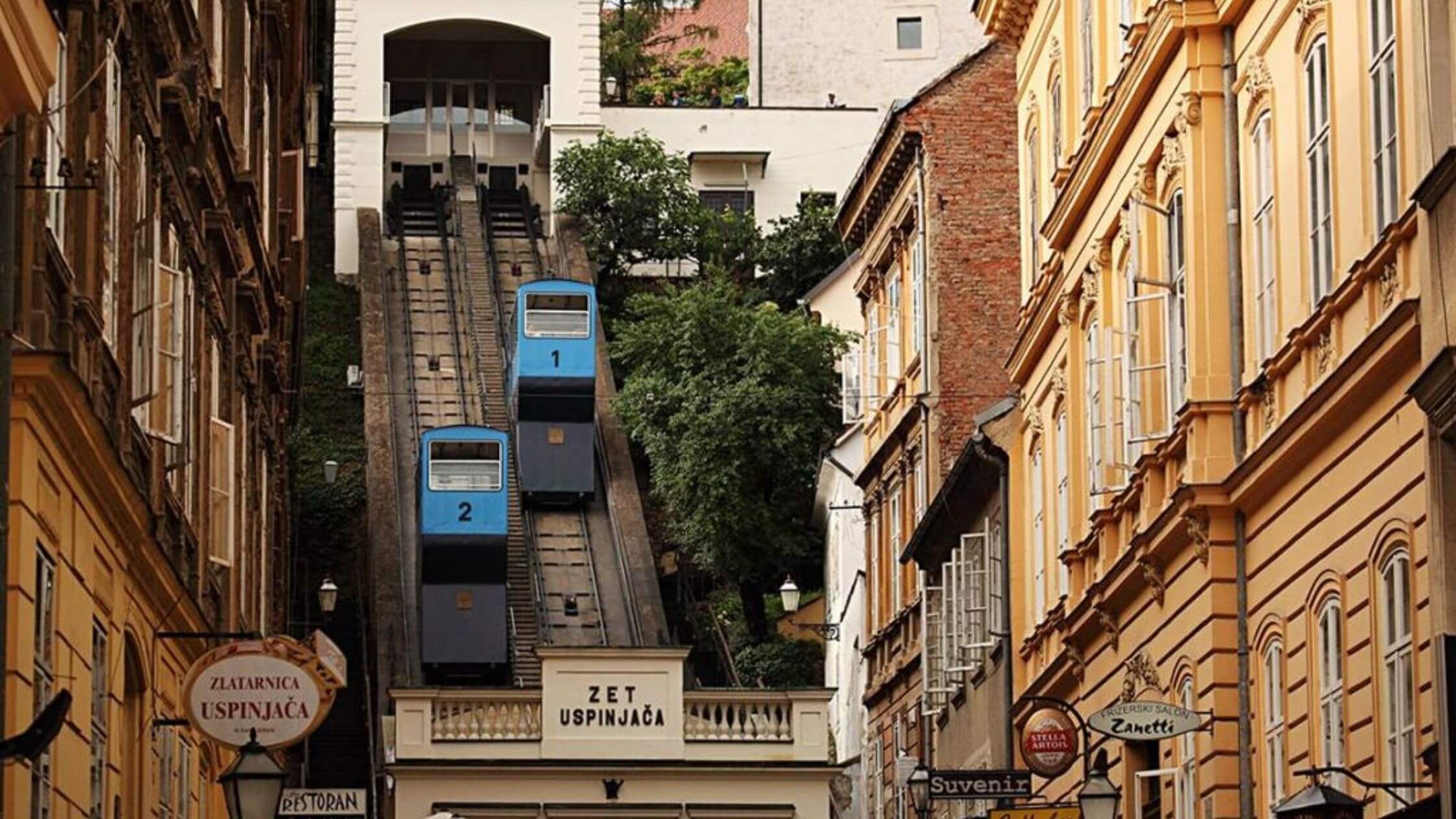
Image: inavukic
But regardless of which route you take, by now you'll want a break from all that walking, and what better way to do so than to stop for some sweet delicacies. Right beside the funicular end at Tomićeva is Vincek, the famous Zagreb cake shop, or rather its small outdoor branch known as Vis a Vis. Their kremšnita (cream pie) is a Zagreb favourite, and definitely one to savour in the outdoor setting, next to the carrot cake or triple chocolate brownie. What’s more, all their pastries are gluten-free, meaning those with allergies do not have to miss out.
 Image: Gilbertt G/Tripadvisor
Image: Gilbertt G/Tripadvisor
18.00-20.00 p.m
As the sun sets, head down to Zrinjevac park, a popular hanging spot to just sit in the grass and enjoy the atmosphere. Stop at the nearby Studenac grocery shop for some drinks or snacks, and chill out in the park. If there is an event happening, such as Cest is dBest or the Food and Film Festival, enjoy the music, performances, food and drink, and souvenirs.
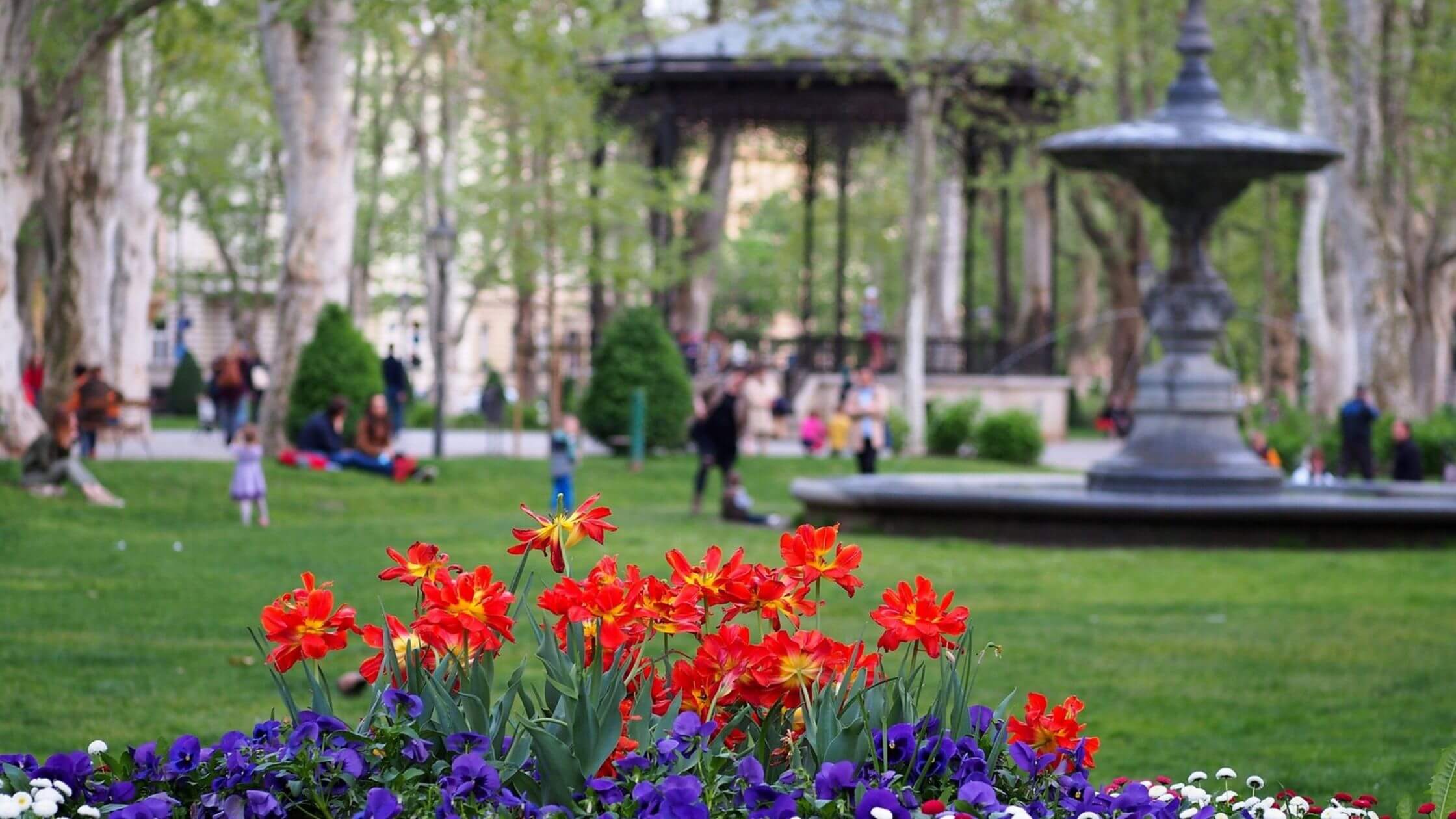
Image: e r g a s/Flickr
Otherwise, just use the hours to rest and take in the scenes. Walk around the park and go into the other nearby ones like the Josip Juraj Strossmayer park or the one at Kralj Tomislav square.
20.00-23.00 p.m.
If you're after a night out at the club, know that the Croatian way is to go in late hours. Which leaves plenty of time for a bar crawl to get your energy going for a long night ahead! Zagreb has a rich nightlife scene that has only continued to grow in recent years, and no matter what you're into, there is something for everyone. On the main square you have the popular bar and club Johann Franck. Going in towards Bogovićeva street, there’s Bulldog, and in Ilica, the stunning Swanky Monkey Garden, with its chill garden terrace vibe and excellent cocktails. And in the summer, head on further down to Tuskanac for the Pop Up Summer garden. For more info on what to do in Zagreb during the summer season, check out our guide covering festivals and other events in Zagreb that are either cheap or totally free.

Image: Swanky Monkey Garden/Facebook
Now, if you identify more with counterculture, a bar crawl of Zagreb’s range of alternative pubs is the way to go. Starting on Preradovićeva street, you have Alcatraz, the bar/nightclub that has earned itself a cult following thanks to its regular lineup of cheap drinks and rock tunes.
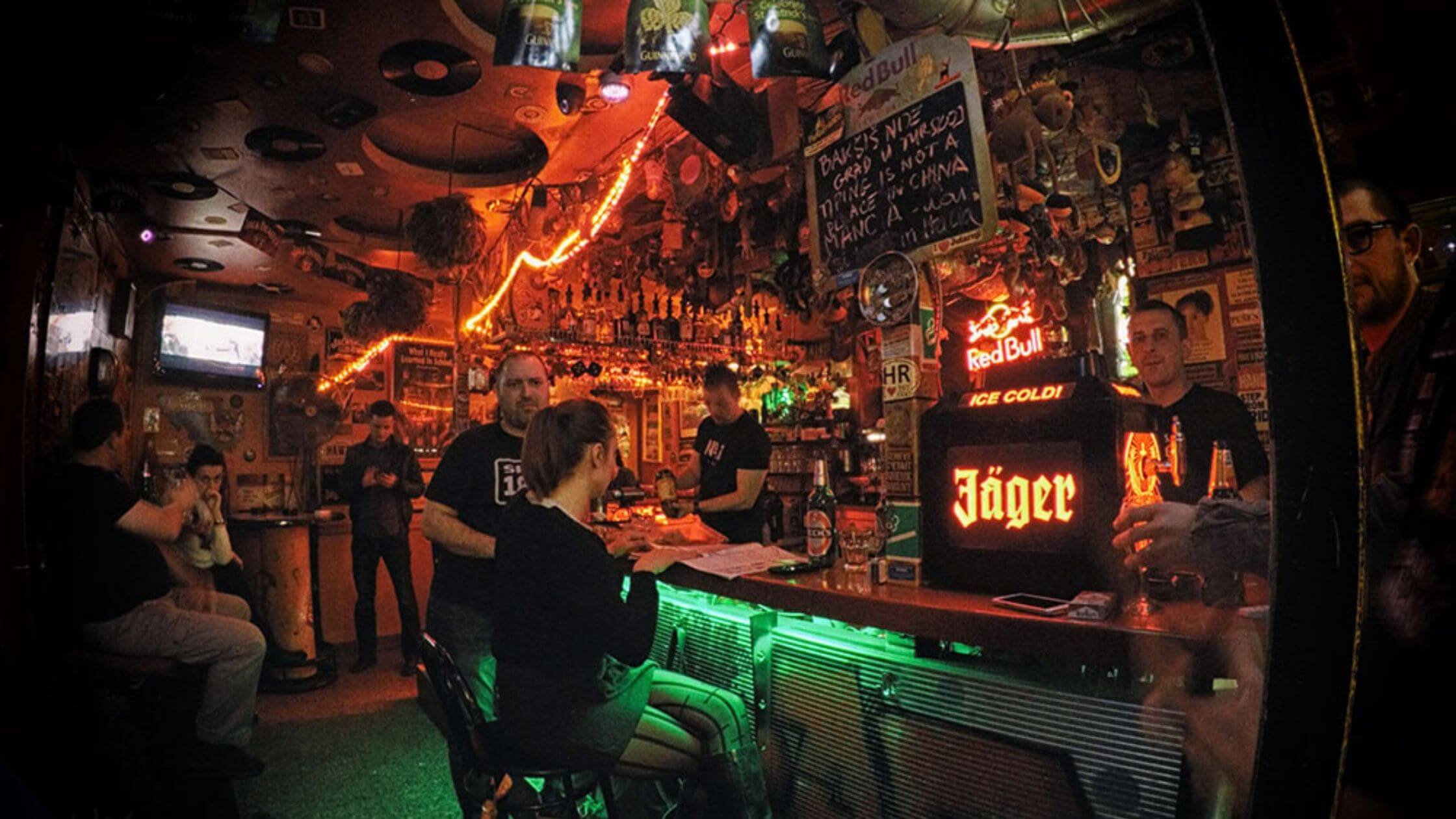
Image Credit: Neven Vukovic/CityPal
Nearby there’s Rock star, fully adorned on every wall with rock memorabilia, and just 9 minutes away is The Beertija, the rock-themed outdoor beer garden and nightclub with its long menu list of top-quality beers.
23.00 p.m-early hours
Now that it's time to hit the clubs, there’s the trendy Opera on Petrinjska, known as one of Zagreb’s top clubs with the best events and party atmosphere, attracting large numbers of visitiors in the spacious interior from late night till the early morning hours.
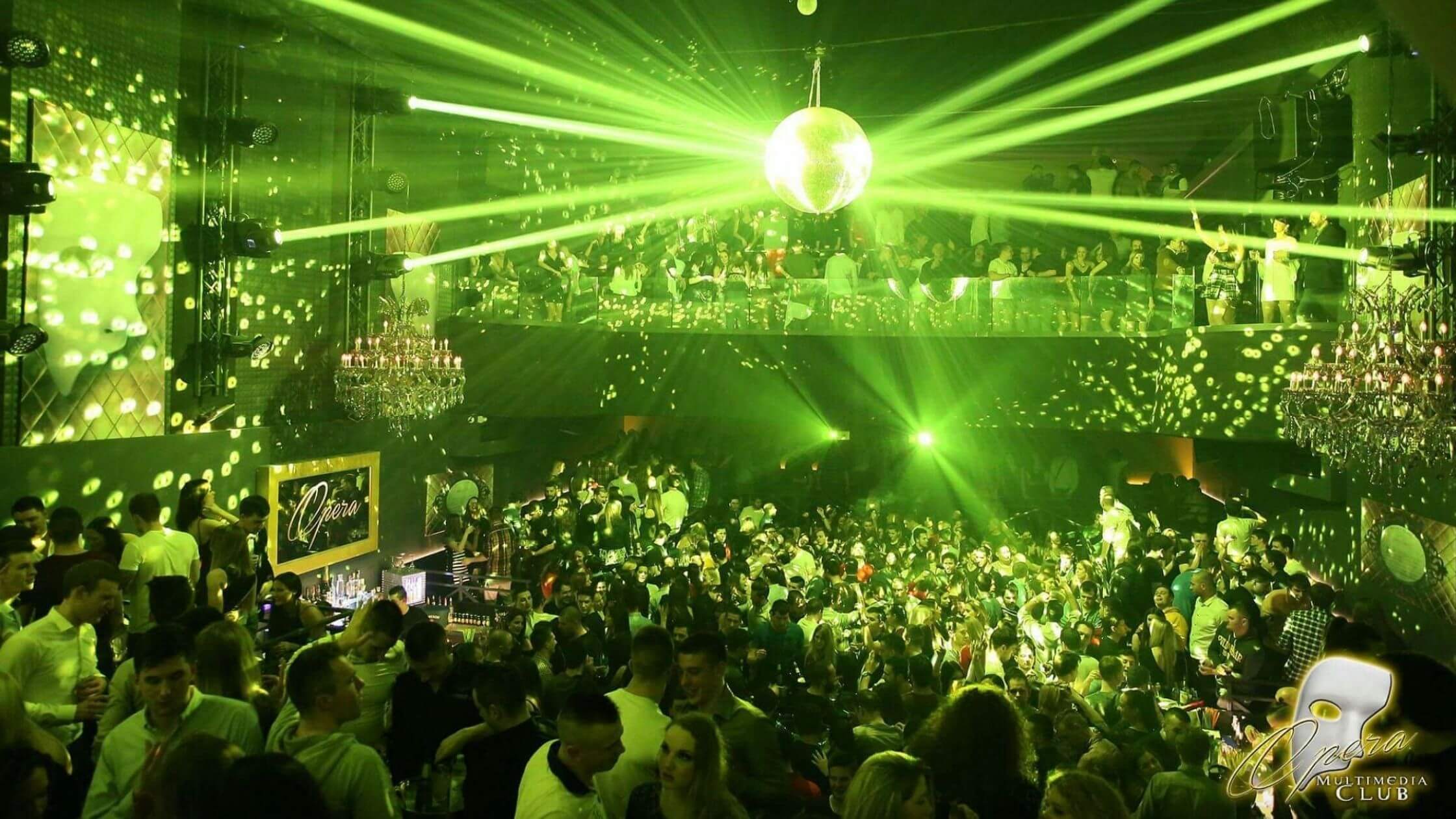 Image: Pjerino B/Tripadvisor
Image: Pjerino B/Tripadvisor
For those following the alternative bar crawl, there’s Vintage Industrial at Savska (easily go there from i.e. the Beertija, via the 4 or 17 tram), or for the younger crowd, Močvara at Trnjanski nasip (slightly further away and best reached via the bus).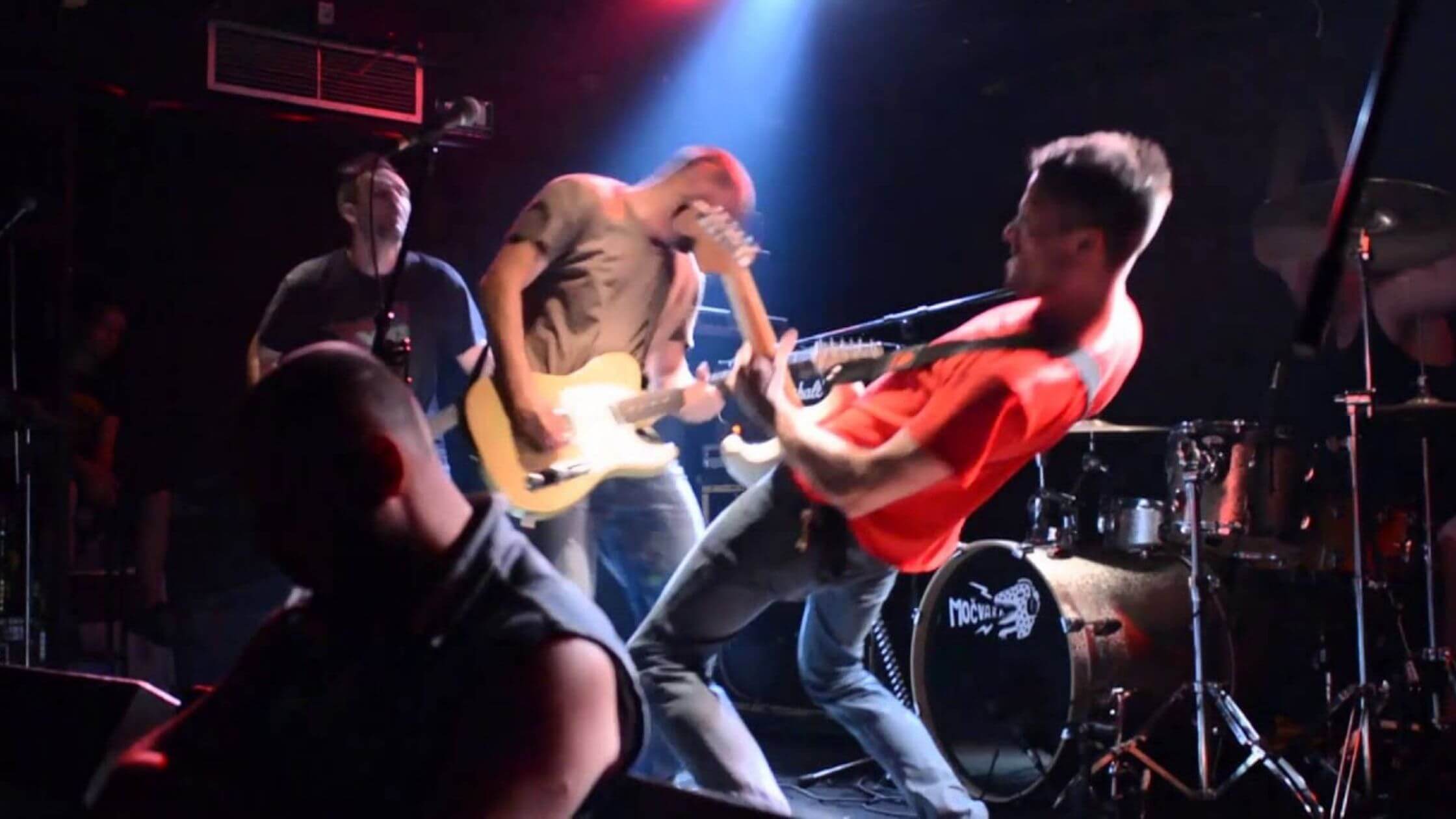
Image: mochvara.hr
6.00-9.00 a.m.
If you’ve finished a long night out or just want to get a quick coffee before wrapping up the day, you can always head back to the main square and stop back at Mala Kavana, or grab a slice of pizza at Fries Factory - the latter being a classic post-night out snack stop.
And there you have it, the best 24 hours spent in Zagreb, hopefully showing just how much the small capital has to offer - not just its history and culture, but also its people and way of living.
For more on travel in Croatia, follow TCN's dedicated page.
Italian ABS Investing 200 Million Euros in Sisak Ironworks
April the 28th, 2022 - The Italian ABS is investing a massive 200 million euros into the once rather problematic Sisak ironworks according to recent Italian media publications.
As Poslovni Dnevnik/Marija Brnic writes, the once somewhat troublesome Croatian steel plant in Sisak will soon get a large cash injection according to Italian media, which have reported that the executive board of the ABS Group, owned by ABS Sisak, approved the company's investment programme worth a total of 400 million euros, and part includes the construction of a new iron rolling mill in Sisak.
The Italian company announced that this is a large and revolutionary project, a kind of milestone in the production of steel, which, with the technological breakthrough will be of great importance in the context of energy transition.
Danieli Digital Melter's new steel melting technology should enable the direct use of renewable energy sources, and according to the announcements, instead of a conventional electric furnace, solar energy will be used by installing 160,000 square metres of solar panels, which will make ABS a leader in green steel production. The Italian metallurgical company, which is owned by the Italian industrial giant, the Danieli Group, revealed that this ambitious project for the Sisak ironworks will be realised over a three year period.
Danieli decided to enter the investment venture of ABS in response to the sharp increase in demand for steel across Europe, and major changes on the global steel market, which began being felt before the war in Ukraine broke out. Following the Russian invasion of neighbouring Ukraine, a complete turnaround and a return of steel production in the EU and the USA took place. Danieli has been encouraging research and development activities for years now, looking more deeply into so-called green steel, through carbon reduction, and even the preparation of the use of hydrogen in production, and over recent years, ABS has invested in the modernisation of its production over one billion euros.
This will not be the first investment in the Sisak ironworks, ie this particular "unit" of ABS, about which the details aren't yet being revealed when it comes to the specific investment in the new rolling mill.
Davor Sosic, President of the Management Board of ABS Sisak, who took over the management a month ago, pointed out that two years ago, a new innovative digital power system, Q-One, worth 10 million euros, was installed at the Sisak ironworks. Sosic explained that this represented a huge step forward for the Sisak ironworks in general, which is a large consumer of energy, and the existing system has caused difficulties and a decline in the electricity network.
It is a prototype, which will be used by ABS in Italy, whose main effect is not to reduce electricity consumption, but primarily to improve overall system efficiency.
The owner of the Sisak ironworks decided to enter this investment in the midst of the coronavirus crisis, when the steel market slowed down worldwide. Sosic also pointed out that 5.6 million euros were invested in the renovation of the continuous iron casting plant, which was completely obsolete, and this year, the electric arc furnace is being replaced, which is an investment worth more than six million euros.
"We're continuously trying to raise the technological level of the plant and our goal is to increase our existing annual production,'' stated Sosic, adding that it is expected that this level will be exceeded with the new rolling mill. It's worth noting that the Italian ABS currently produces about 1.2 million tonnes of steel per year, and it is estimated that it will double this production after the new investment is completed.
This new investment venture in the Sisak ironworks should significantly transform production there, as the plants are now producing semi-finished products. After the construction of the new rolling mill is completed, Sisak's ABS will also sell those finished products, which will be a big step forward in terms of their further business.
The Sisak ironworks is otherwise already achieving constant growth, and operates mainly on foreign markets, from Italy to Turkey and Germany. In the 2019/2020 business year, in the conditions of the global coronavirus pandemic and difficult business for the steel industry on a global level, the total revenues of ABS Sisak were at the level of 114 million kuna, and the following 2020/2021 period, their revenue stood at an impressive 463 million kuna. In the first half of the new business year, more precisely from July to December 2021, which was marked by higher steel prices, their revenues exceeded the entire previous business year, reaching almost half a billion kuna, so it's only natural that ABS Sisak expects to achieve a record result this year.
For more, check out our business section.
Inflation Soaring, Wages Stagnant: Croatian Standard May Halve
April the 28th, 2022 - The Croatian standard could literally be slashed in half as inflation continues to soar and the average wage across the country remains more or less the same.
As Poslovni Dnevnik writes, due to the increase in the price of energy and food, the Croatian standard could literally be halved. Then comes the big worry of price increases after the introduction of the euro in 2023. On top of that, 240,000 peoples' bank accounts have already been blocked, Deutsche Welle writes.
"The Croatian standard of living will fall over the next few years due to rising energy prices, shocks in supply chains, as well as increased private borrowing, lending and the uncontrolled printing of money," said Dr. sc. Marinko Skare, a rector and professor at the Juraj Dobrila University of Pula.
The Croatian population was hit by rising gas, fuel and electricity prices even before the outbreak of the war in Ukraine and the economic consequences that naturally follow, and due to shortages on the global market, a significant rise in food prices began last year.
The Croatian Government mitigated that price shock with a package of economic measures as part of which it reduced VAT on energy and certain foodstuffs.
Skare believes that the effects of these measures will be negligible: “It's like 50 percent balances (discounts) on Trieste's Ponte Rosso in the last century. They include two t-shirts and everything else remains at its normal price. The situation is the same with VAT: sure, the prices of napkins will fall, and the prices of all necessary consumer goods that people buy will rise. Food and energy prices will rise regardless of the government package and this price increase has already been calculated into inflation and prices. We all know that food and energy will become even more expensive, in an optimistic scenario, by around 10 to 15 percent,'' said Skare.
Croatia's entry into the Eurozone
Unfortunately, he added, the Republic of Croatia is almost entirely dependent on the tourist season and not a great deal else: “A once respectable industry-based economy has turned into the Dominican Republic or the Maldives. These measures must go towards energy self-sufficiency (LNG, solar panels), with the prolongation of Croatian Eurozone entry,'' believes the Pula-based economist.
Namely, according to him, the introduction of the single currency from the beginning of 2023 will bring a further wave of inflation to Croatia, which is something nobody needs at this moment in time.
"The experiences of other countries have shown that the growth of prices on an annual basis after the introduction of the euro was on average 2 to 2.5 percentage points. Of course, this isn't the right timing for the introduction of the euro in Croatia because the only instrument you have in the fight against inflation is monetary policy,'' he explained. In his view, a single monetary and fiscal policy at the EU level is just another economic myth.
"The economies of Italy, Germany, Ireland and France have almost no similarities with the economy of Croatia. How will you solve the problem of inflation in Croatia through the ECB? In addition, the ECB is the worst of all, the ship is sinking, but the music is still playing, money is being printed, interest rates are at historically low levels, and inflation is going wild,'' stated Skare.
When he talks about the more optimistic variant, he predicts the current level of inflation to remain as it is over the next three years. However, if the war in Ukraine escalates and leads to energy and trade wars, he believes there are no limits to rising prices in the coming years, and that doesn't bode well whatsoever for the Croatian standard as we know it now.
Everything points to an enormous crisis
"The world has never been closer to a new Great Depression than it is now, possibly bigger than the one back in 1929. Unfortunately, all the causes of the 1929 crisis are before us: the possible collapse of the stock market (the uncontrolled printing of money) and global trade (a global pandemic and the war in Ukraine), the unadjusted policies of governments around the world and the potential decline in international lending and borrowing, future monetary contraction, bank panic and bankruptcies,'' explained Skare.
He believes that the real Croatian standard could fall by up to 30 percent, and if the Ukraine-Russia war continues as it is and the ECB's policy doesn't adapt and change, he believes that a fall of up to 50 percent in the Croatian standard is also possible. On the other hand, he says there is no room for wage and pension growth to the extent that it would mitigate the fall in the real standard due to rising prices as it would lead to hyperinflation and stagflation on an unprecedented scale.
Everything is more expensive, yet the average Croatian income is the same
Along with inflation, the number of people across the country living on the brink of poverty is growing, as is the number of those who have had their bank accounts blocked due to accumulated unpaid debts. According to the latest data from the Financial Agency (Fina), more than 240,000 people have had their bank accounts blocked due to collective overdue debts of 24.8 billion kuna, along with interest.
Kresimir Sever, the president of the Independent Croatian Trade Unions, noted that the Croatian standard was greatly endangered even before the wave of price increases that started last year.
"According to the Central Bureau of Statistics (CBS), about 27.2 percent of the monthly cost of the average Croatian household falls on food and non-alcoholic beverages, and 17.7 percent on housing costs, which includes energy bills. Since these are areas where price increases have been very much pronounced, it's clear that this is causing an extremely strong blow to a wider circle of people.
''Households in rural areas, those who are single and/or retired, those with more children, the unemployed and the sick are groups of people who are particularly at risk,” warned Sever.
"The Government doesn't have many mechanisms at its disposal"
The at-risk-of-poverty rate for the year 2020 stood at 18.3 percent in Croatia, and since these official figures are solidly late, the real situation is much worse, according to Sever. It is realistic to expect a further wave of rising prices for food, transport, housing, and consequently other goods.
"Apart from the economic measures it has taken, the government doesn't have many mechanisms at its disposal. A little more can be done in the area of excise duties on fuel, the VAT on electricity can be lowered from the current 13 to 5 percent. However, when it comes to lowering VAT, for example on petroleum products, there's no guarantee that, precisely because of the freedom to set prices, they will be reduced at all. When it comes to the possible freezing of the prices of some foods, there may be shortages because the seller doesn't even want to offer these products because such prices reduce his profit,'' concluded Kresimir Sever.
For more, make sure to check out our lifestyle section.
Recent Herzegovina Earthquake Causes Damage in Dubrovnik Area
April the 28th, 2022 - Several days have now passed since the strong earthquake which had its epicentre in neighbouring Bosnia and Herzegovina also rocked parts of Croatia. Damage in the wider Dubrovnik area has been reported.
As Morski writes, the Herzegovina earthquake was felt across parts of Croatia, particularly in Dalmatia but also in the more continental regions of the country. In the wider Dubrovnik area, damage to residential and other buildings is very much visible. Seismologists have been busy touring the Dubrovnik area's hills and setting up mobile seismographic devices.
Only twenty kilometres from the epicentre of the earthquake in neighbouring Bosnia and Herzegovina, lies the town of Trnovica on the wider Dubrovnik area's coast, and the earthquake damage on the hundred-year-old houses in the village can be easily seen.
''You could hear how stones were falling, you didn't know if the houses themselves were entirely collapsing, it's dark, you can hear old dry stone walls collapsing and you can't know if everything around you is caving in or not,'' Pero Groseta, a resident of Trnovica, recalls.
''Everything that could have been broken has been broken, our wall has cracked,'' said another local Trnovica resident, Antonija Broketa.
The church of St. Hilarion (Sv. Ilar) in Mlini, just south of the City of Dubrovnik, now needs a new roof as a result of the recent Herzegovina earthquake. The recently renovated interior of the church is now full of cracks, HRT reports.
Cracks also occurred in the walls of the building of the kindergarten in Trsteno, but fortunately the statics of the building haven't been endangered.
''At no time were any of the children endangered, but due to the damage to the facade, and in agreement with the founder, we decided to move the children to a facility in Zaton,'' explains Dijana Brkic, the director of Pcelica (Little Bee) Kindergarten in Trsteno..
Seismologists now have their hands full once again, much like they did back in March and December 2020. They're travelling around the wider Dubrovnik area and setting up new, mobile instruments that they brought with them from Banovina, now synonymous with earthquakes.
''The importance of these devices is to obtain records of all these subsequent earthquakes and tremors that happen every day, even the weakest ones that aren't felt by humans,'' explained Kresimir Kuk, a very well known Croatian seismologist.
''We need to find the quietest possible location, which means that we need to be away from places where there is strong human activity, traffic and so on, so we're looking for a such a place, but we still need quality electricity and a good internet signal to be able to send information to our centre in Zagreb,'' pointed out Snjezan Prevolnik, another seismologist.
The tremors of the ground are still being felt from time to time, and as much as the people of the wider Dubrovnik area are used to tremors, they hope that this situation will calm down quickly.
For more, make sure to check out our lifestyle section.
Istria Proclaimed Best Olive Region in World for 7th Consecutive Year
April the 28th, 2022 - Istria has been proclaimed the world's best olive region for the seventh year in a row, which will hardly come as a surprise to most who flock every year to this part of Croatia to get their fix.
As Morski writes, according to the world's guide to extra virgin olive oils (Flos Olei 2022), Istria is once again the world's best region for extra virgin olive oils, this declaration has been given to the peninsula now for the seventh time in a row. This is especially important for the promotion of Istria as a destination because the publication boasts oils from all over the world, ie from 55 olive groves spanning 5 continents. As such, this part of the country's many olive growers have rightfully found themselves in the company of the world's 500 best with a total share of as much as 13 percent.
66 olive growers from across the peninsula produced such high quality extra virgin olive oil that they deserve a prestigious award, ie inclusion in the thirteenth edition of Flos Oleia.
In this latest edition, the so-called ''bible for extra virgin olive oils'', 67 oils from Croatia are included, of which 66 are from Istria and one comes from further south in Dalmatia. A large number of Istria's olive growers achieved even better results compared to last year, which is proof of the continuous work they put into raising their quality and the application of the latest scientific and technological achievements in olive growing.
The success of local olive growers is far from accidental. With favourable agro-climatic conditions, it is the result of numerous agricultural policies in that area over the past 25 years, such as the intensive education of local olive growers, the wider distribution of seedlings, but most importantly, loans approved by the County Fund for Agriculture and Agrotourism of Istria, as reported by Regional Express.
Thanks to education, the technology of olive growing in Istria has been completely altered, as has the time of harvest, and large investments made by local olive growers with the support of Istria County have enabled such huge steps forward. Huge investments and knowledge have been invested in the preparation of oils for the market, and all this has enabled the Extra Virgin Olive Oil "Istra" to gain protection at the European Union (EU) level. This mark of authenticity guarantees each consumer that all phases of production, processing, storage and bottling have taken place in Istria.
''The decision to brand Istria as a region which offers top agricultural products and not to choose quantity at the expense of quality proved to be a successful recipe. For the seventh year in a row now, we've had it declared that we've got the best olive oil in the world. Agriculture is a branch that requires a lot of hard work and investment, so my sincere congratulations and thanks go to all of Istria's olive growers. Istria County will continue to strongly encourage further development of this branch through the Fund for Development of Agriculture and Agrotourism of Istria, the construction of a public irrigation system, and projects and programmes implemented by the County Agency for Rural Development of Istria,'' said County Prefect Boris Miletic.
Istria has been declared the best olive growing region in the world for the seventh year in a row. This part of the country has taken on an important role and positioned itself as the second best olive growing region, just behind Tuscany. However, every year the advantage of Tuscany was smaller, and at the end of 2016, Istria took the leading position that it has maintained to this day.
For more on Croatian products, as well as olive oil from up and down the coast, make sure to check out Made in Croatia.
Ryanair Zadar Winter Flights Planned for 2022/2023
April 28, 2022 - The latest flight news to Croatia as Ryanair Zadar winter flights are in the plans this year, with Vienna-Zadar currently available to book this winter on the low-cost airline's website.
Irish low-cost airline Ryanair released tickets for this year's winter flight schedule, which will take effect at the end of October. While there are no major operational changes in Zagreb (only two existing lines will not be in traffic), it is interesting to announce regular flights to Zadar Airport this winter, reports Croatian Aviation.
Following the opening of sales for this year's winter flight schedule, a line between Zadar and Vienna is now available to book this winter on the Ryanair website.
Last fall, the CEO of Ryanair announced regular flights to Zadar in the winter, which ultimately did not happen as Ryanair winter flights did not take place from the Zadar Airport.
The airline now announces regular flights in the winter on the mentioned line between Vienna and Zadar, twice a week, on Fridays and Sundays. The question is whether the airline will stay with this plan and really fly to Zadar in the winter. However, given that we are only in April and November is still very far away, we must be careful to say that the flights will actually take place.
Croatian Aviation adds that we should be happy that the Irish carrier is planning this option, which would be extremely important for the airport and tourism in the region. We can only hope that the flights will run this winter and that in the coming weeks and months, Ryanair will announce more winter routes to Zadar Airport.
This also falls in line with the Split winter tourism initiative, which is pushing for flights to be extended into the winter schedule. You can read more about that here.
For more on flights to Croatia and other travel announcements, check out our dedicated travel section.
Rijeka in 24 Hours: Footsteps on the Crossroads of Empire
27 April, 2022 - While it may not have the international reputation of Dubrovnik or the quaint village charm of Rovinj, Croatia's third-largest city is well-deserving of the attention of the zealous globetrotter. Here's all you can do in Rijeka in 24 hours.
Rijeka, or Fiume as it is called in Italian nomenclature, is Croatia's principal seaport and third-largest city. Because of its unique location and advantageous deep-water port, this gem of the northern Adriatic has been contested by many fantastic realms, including the Hungarians, Italians, and the Holy Roman Empire. Luckily for us, centuries spent at the causeway of great power have left much to be admired by those who venture to the city, labeled 2020's European Capital of Culture. Are you looking for the dynamic urban energy from which European cities earn their fame, or maybe you'd prefer the casual beachy vibes that draw millions to the coast every summer? If you want all these things and more, the choice is already made. Rijeka is the destination for you.
To facilitate your journey, I have put together a guide to 24 hours in Rijeka, including some of the best that this city has to offer.
9.00 a.m. – 10.00 a.m.
There is no better way to start your seaside getaway than with a classic Mediterranean breakfast of fruits and pastries. Think croissants, melons, oranges, maybe with a small cup of strong coffee. Whether starting from a luxury villa or a bargain Airbnb, you should take pleasure in the day's first meal. While there are numerous cafes that offer a selection of tasty early-morning delicacies, personally, I prefer to purchase my own rations from the market. The Rijeka's harborside market opens at 7.00 a.m. Explore the stands overflowing with fruits, vegetables, seafood, meat, nuts, and of course, liquor. Purchase whatever suits your fancy, and don't forget some snacks for later.

Image: Rijeka Tourist Board
10.00 a.m. – 12.00 p.m.
Since you're now out and about, get the ball rolling by wandering through the oldest part of the city. Located near the remains of the Roman settlement of Tarsatica, which dates to the 3rd century A.D., take part in Rijeka's long history as a trade city. While still part of the Austro-Hungarian empire, goods were toted in and out of this still-bustling port city, moving products like sugar, paper, and the torpedoes invented there.
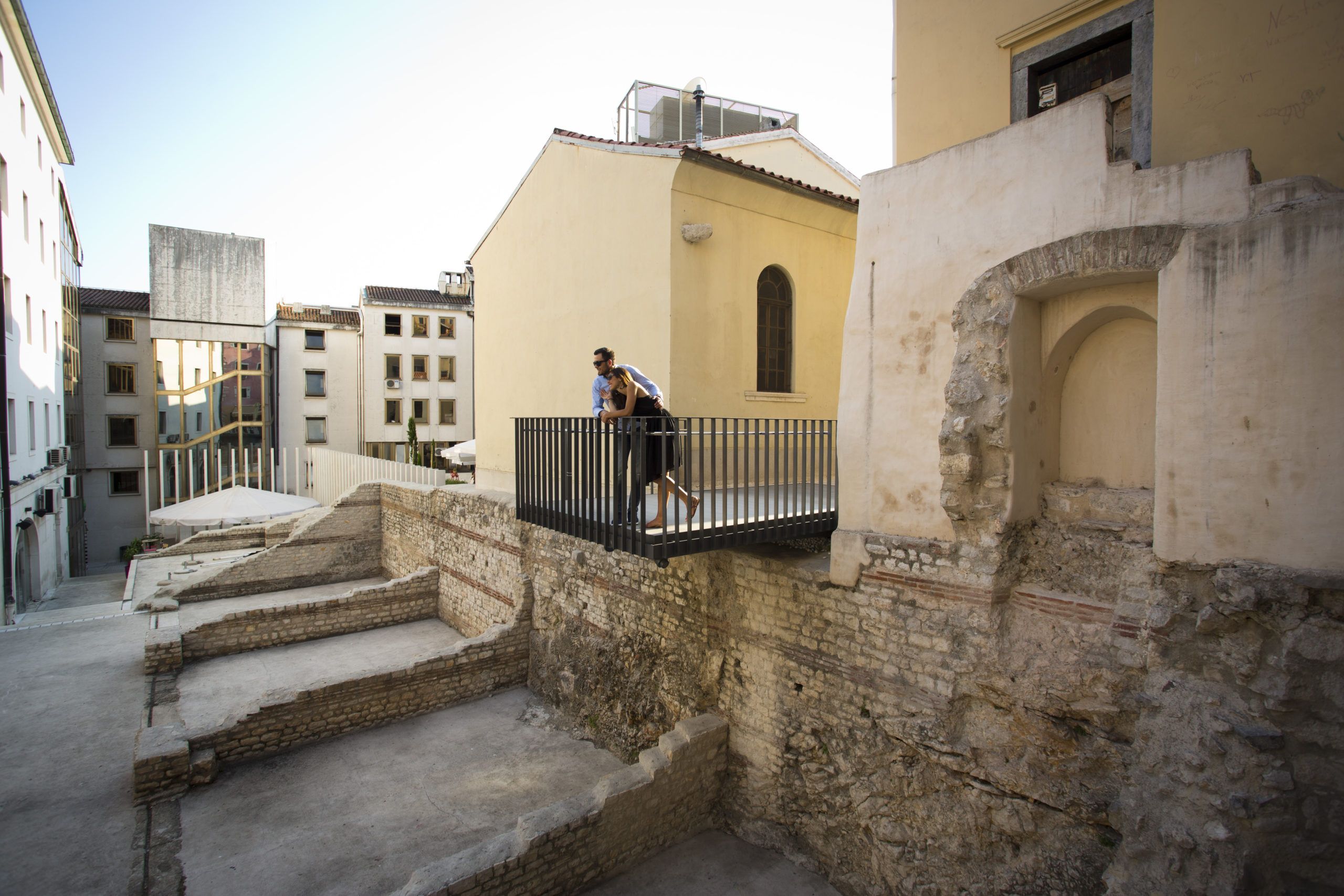
Image: Rijeka Tourist Board
In the old town, you too can find exciting products either for yourself or the loved ones waiting for you at home. Croatia in a Box, a boutique that sells many handmade items, including beautiful hand-carved oak bowls, comes highly recommended. Combine and create your own version of Croatia in box form.
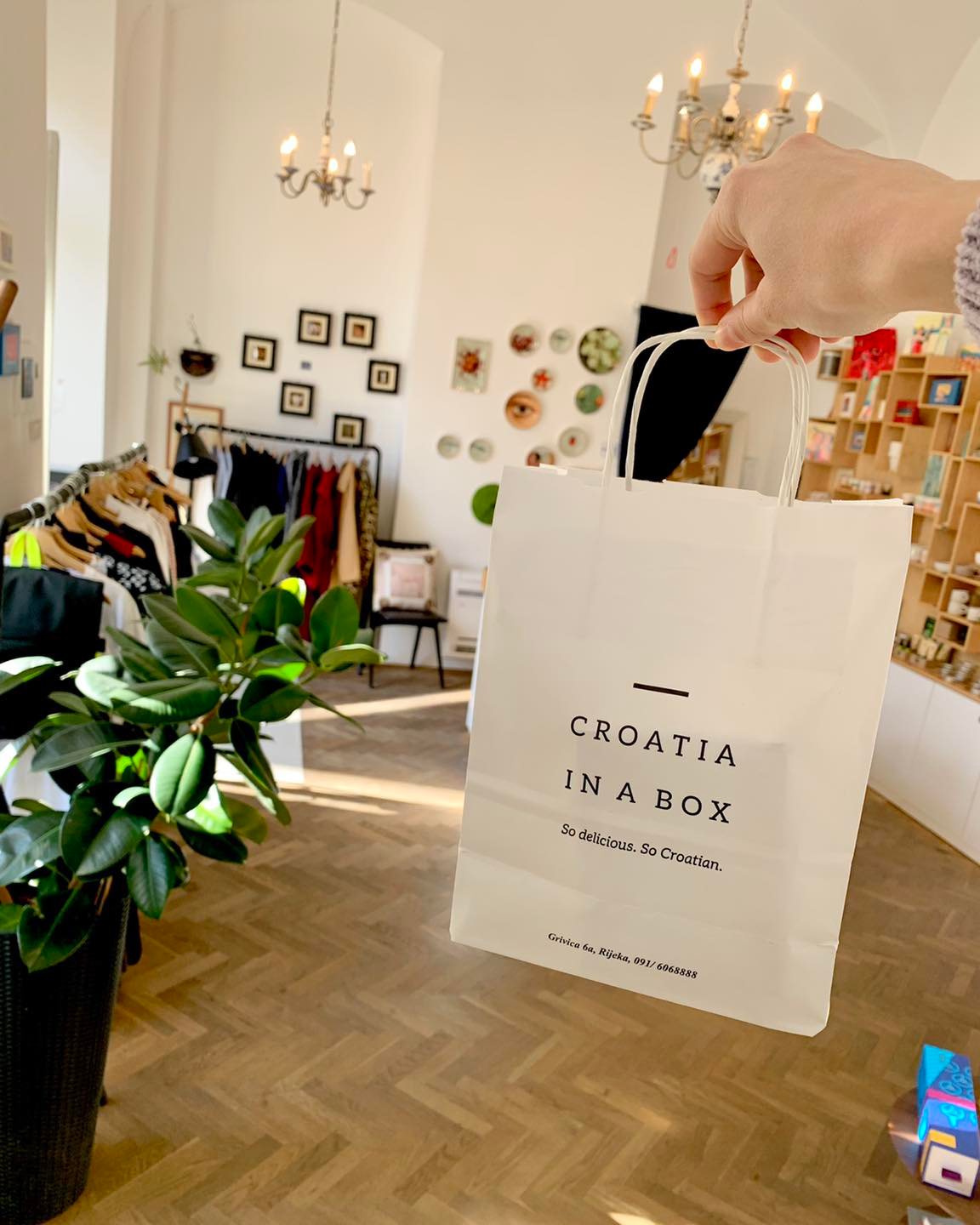
Image: Croatia in a Box (Facebook)
12.00 p.m. – 2.00 p.m.
Search for a spot to plant yourself and enjoy a delicious Croatian lunch. While there are options for every palate, the local specialties are mostly seafood-based. Enjoy shrimp and truffle sauce on a bed of pasta, delightful scampi, or surrender to the day's soup containing the best catch. Whatever you choose, I'm sure you'll find new meanings for the word "ukusan" or "delizioso." If you're unsure where to eat, the restaurant Konoba Fiume provides those who enjoy the local experience with an authentic local midday meal.
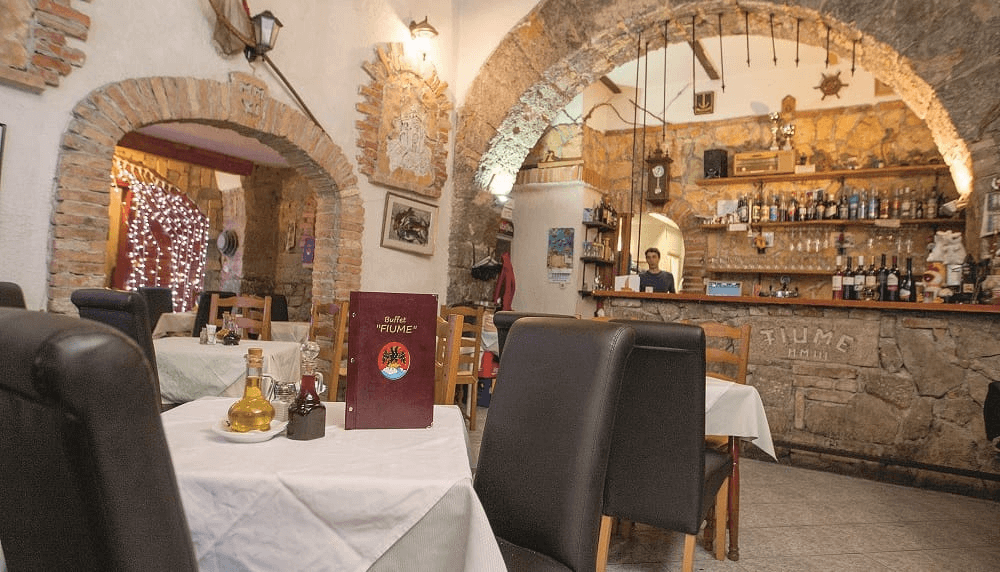
2.00 p.m. – 3.00 p.m.
Now that you are full of delicious Croatian goodies, it's time for a history lesson. It can't be a European vacation without visiting at least one museum, right? The Maritime and History Museum of the Croatian Coast is located in the Governor's Palace, providing visitors with information about a region that the guidebooks often leave out. The museum contains exhibits covering periods from the Bronze Age up to the modern era.
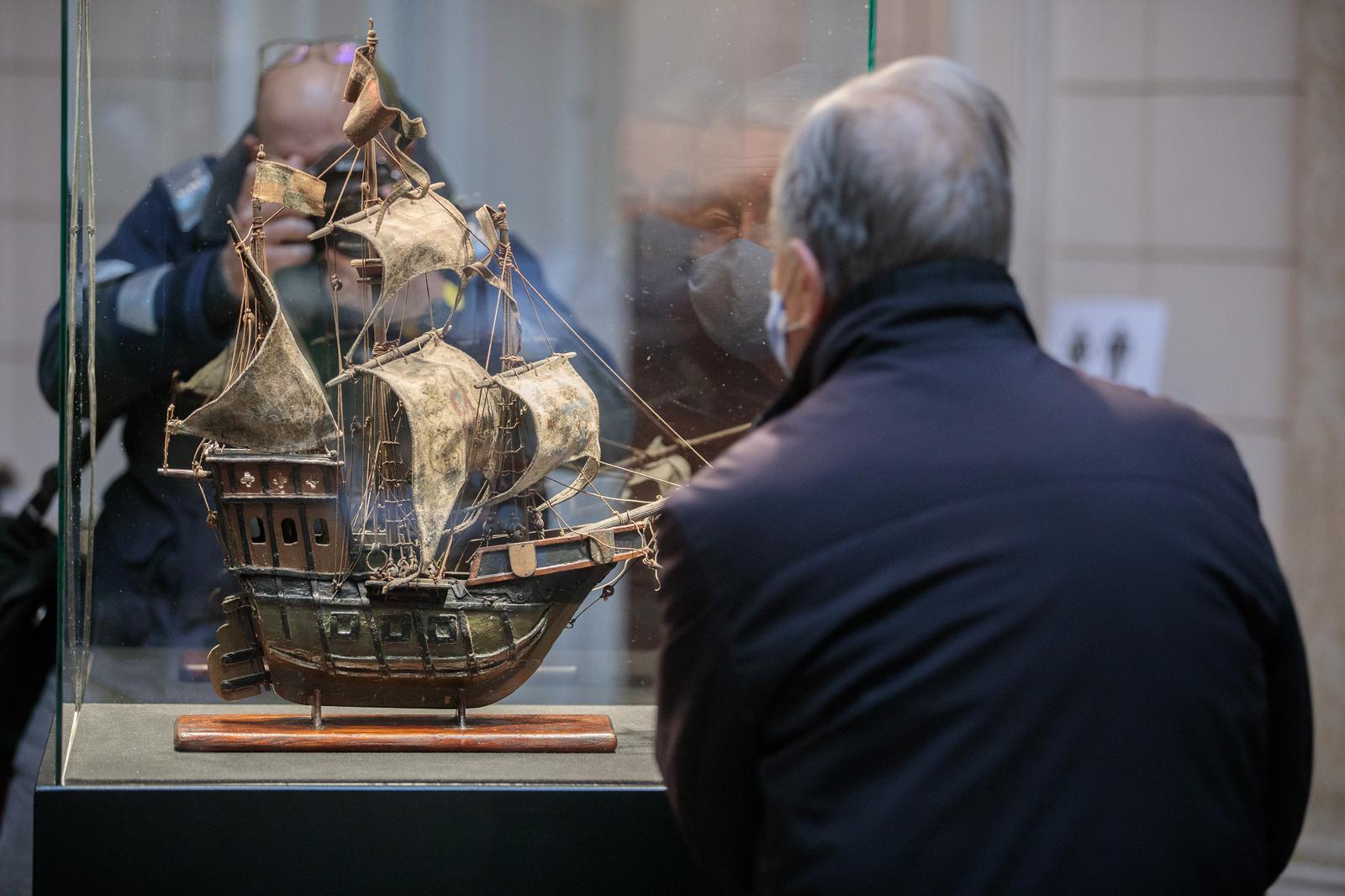
Photo: Nel Pavletic/PIXSELL
For the techy nerds out there, the Peek & Poke Museum provides a glimpse at over 7,000 pieces of tech-nostalgia. Brings the kids! The museum has numerous exhibits geared towards educating children on the importance of computers and technology both in the past and future.
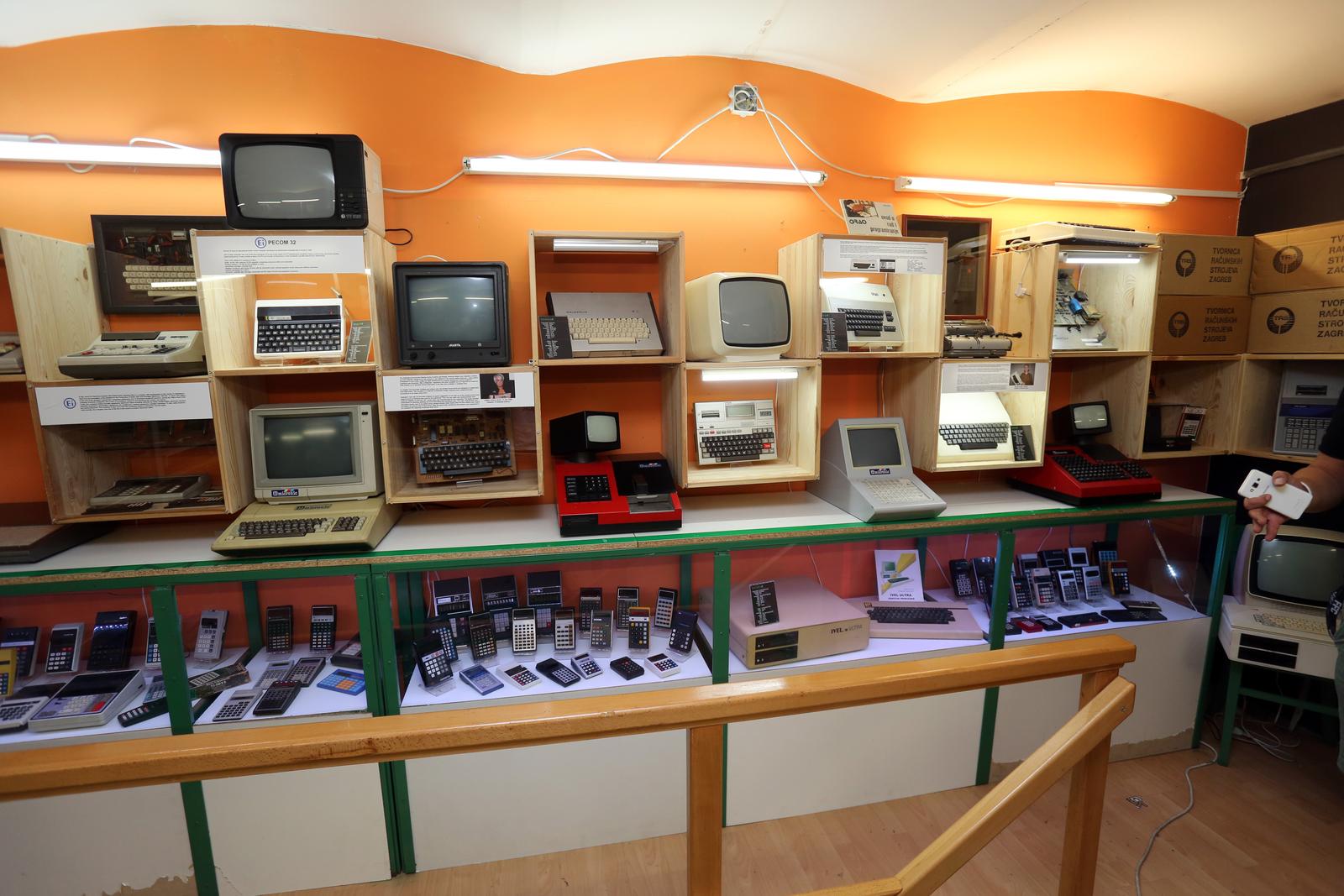
Photo: Goran Kovacic/PIXSELL
Perhaps you find history a bit dull, and computers aren't your thing. Well, worry not! The Museum of Modern and Contemporary Art may be just what you're looking for! This edgy venue sports 8,000 pieces, including paintings, photography, sculptures, and drawings. Channel your inner art critique and bring your biggest, blackest pair of sunglasses to shine in this sophisticated European atmosphere.

Photo: Goran Kovacic/PIXSELL
3.00 p.m. – 5.30 p.m.
After a day of walking, reward yourself by climbing 561 steps… it'll be worth it, I promise. The Petar Kruzic Stairway leads up to the Trsat Castle, which is positioned on the edge of the Rjecina River (Fun Fact: Rijeka and Fiume both mean river in Croatian and Italian, respectively).

Trsat castle overlooking the city of Rijeka below. (Image: Rijeka Tourist Board)
Witness the Kvarner Bay, the Istrian peninsula, and the city itself as you take in the otherworldly views that have transformed Croatia into a 21st-century tourism Mecca. Enjoy the eclectic architectural mixture of the houses below, a firm reminder of the heterogeneous nature of Rijeka's history.
5.30 p.m. – 8.00 p.m.
By this point, you're probably ready for a break. Head back down to the city and search for a tavern or seaside grill where you can replenish the energy you lost climbing all those stairs. The city comes to life in the warm evenings of the summer months. Consider trying octopus or some black risotto, a tentacled delicacy along this coast. You can wash it all down with a glass of local wine or maybe even a shot of slivovitz, a plum liquor that is quite popular in this part of the world.
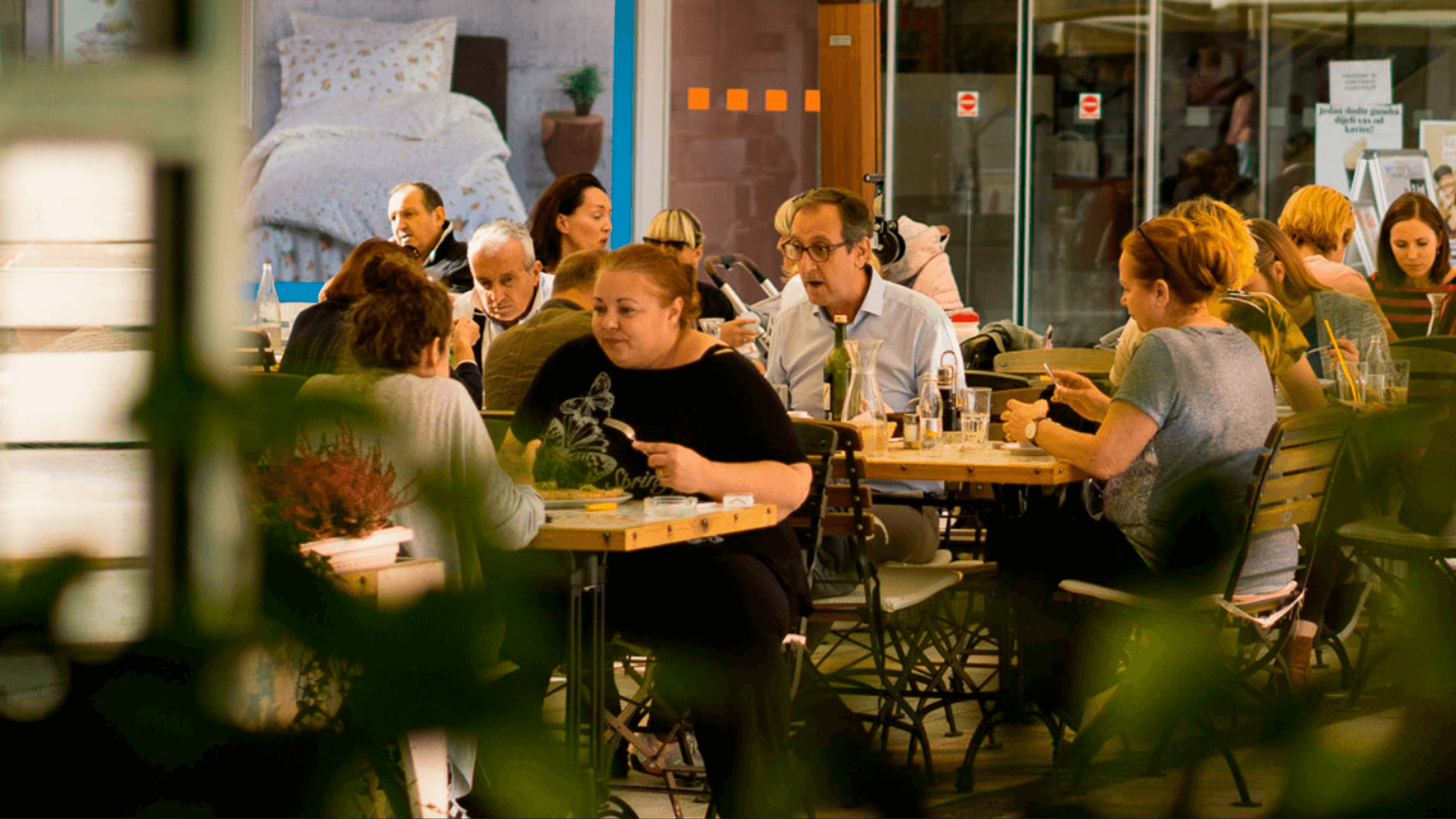
After 8.00 p.m.
For those craving a bit of late-night action, check out the industrial zone. Beer lovers can check one of the late-night water holes (Caffe Bar Skradin is often recommended) and wash off some Mediterranean heat with an ice-cold Croatian pint. If you're more into the music scene, try the Tunnel Club, a nifty venue located under the train tracks that features jazz, indie, and alternative tunes. For the more mainstream Europop fans, finish your night at Zivot and sweat out the jitters to house music under the gaze of Yugoslav-era 1980s family portraits.
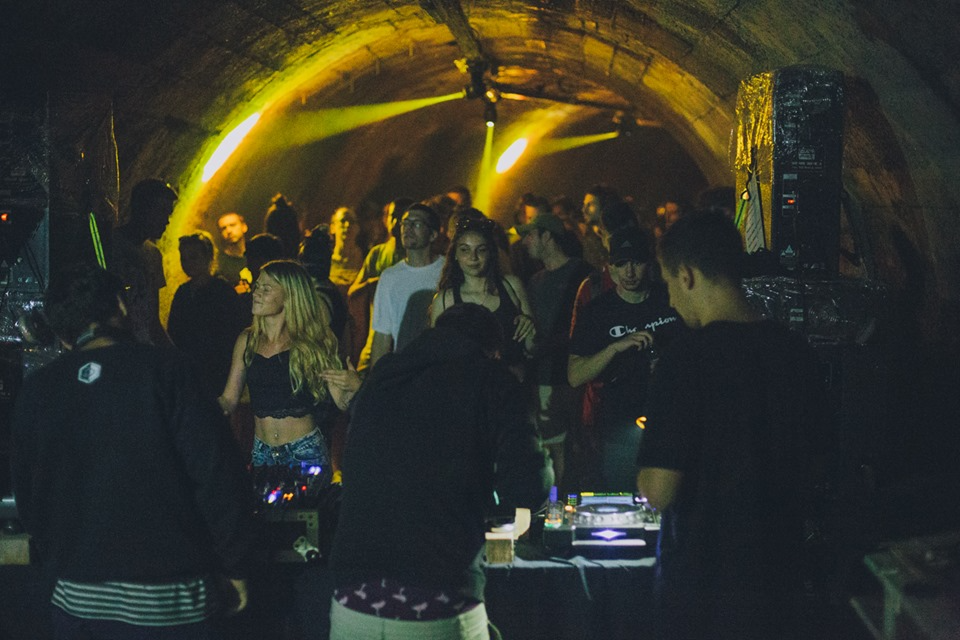
Tunel Club in Rijeka. (Image: Tunel Club/Facebook)
Whatever you choose to spend your time doing in Rijeka, be sure to try out at least a few of these suggestions. You'll be sure to take home stories more valuable than any souvenir.
If you want to find everything you need to know about Rijeka, be sure to check out Total Croatia's complete guide, Rijeka in a Page.
For more on travel in Croatia, follow TCN's dedicated page.
Swiss ImmersionRC and Croatia's Orqa Merge to Create EU-Based Drone Powerhouse
April 28, 2022, Osijek, Croatia – A pioneering company in the FPV industry merges with a leading drone technology startup to create an EU-Based drone powerhouse, as Orqa acquires ImmersionRC.
The deal brings together two of the most exciting companies in the FPV space, whose products and business ethos are a perfect fit. ImmersionRC, based in Switzerland, has been specializing in advanced electronics for a decade and is one of the pioneers of the FPV drone space. By contrast, Orqa was only founded in Croatia in 2018, but has quickly become a global leader in the design and manufacturing of building blocks for drones, as well as expertise in low latency video systems and next generation VR/AR headsets for the remote control of unmanned platforms and enhanced vision capabilities.

(The two CEOs shake on the deal)
Under the terms of the deal, Orqa will acquire 100% of ImmersionRC, whose CEO Tony Cake will join the Orqa team as CTIO (Chief Technology Innovation Officer). All existing IRC products will continue to be sold, developed and supported.
The addition of Cake to the Orqa team brings a wealth of experience to the young Croatian start-up, which is growing exponentially in a sector which is itself experiencing huge growth. Cake's 10 years in the FPV world, as well as over 20 years' experience in high-end test and measurement, will be a major asset.

(Orqa FPV.Ctrl with IRC Uberlite Ghost Module - an example of the excellent collaboration betweeen the two companies for more than 2 years)
Orqa CEO Srdjan Kovacevic, who is currently en route to Washington as part of the DIGITALEUROPE delegation to work with prominent US policymakers to help harmonize global digital business, is excited by the new partnership:
“With the acquisition of the IRC portfolio, Orqa now has one of the most complete drone technology portfolios in the world, and is the only company in the Western hemisphere that has all drone building blocks manufactured in-house. We are thrilled to welcome Tony – already a long-time partner and friend – to the Orqa team, and look forward to moving forward together in these exciting and innovative times.”

(Orqa FPV.One Pilot - Orqa flagship product selling in 50+ countries)
“Having already worked very successfully with Orqa for more than 2 years, primarily as production partner for the Ghost line of products, I have every confidence in the Orqa team and their vision,” said Cake. “ I am looking forward to working with them to continue to develop game-changing technologies. Together Orqa and ImmersionRC will become the most powerful engineering and products company in the FPV drone industry.”
For more information about Orqa – www.orqafpv.com
All media enquiries – Ivan Jelušić, This email address is being protected from spambots. You need JavaScript enabled to view it. , 00385989153798
19-Year-Old Igor Matanović Chooses Croatia National Team Over Germany
April 28, 2022 - Great news from Germany - Igor Matanović, a forward for St. Pauli and the U-19 national team of Germany, has decided to play for Croatia!
He is a great talent, a 194 cm tall center forward who has all the characteristics of a modern player, and many experts are convinced that he has a brilliant career ahead of him. At the end of March, Matanović led the attack of the German U-19 team, scored a great goal in the Euro qualifying match against Italy, and recorded an assist against Belgium. However, he chose to play for Croatia a month later, reports Jutarnji List.
Matanović agreed after a long and synchronized campaign led by Stipe Pletikosa - with the support of HNS President Marijan Kustić. The HNS technical director visited the young striker and his family for months. Matanović should already receive an invitation from the U-21 national team coach Igor Bišćan at the next national team gathering. Bišćan has long indicated that Matanović is a great talent he certainly sees among his chosen ones.
Matanović attracted a lot of attention for the first time two years ago when as a 17-year-old, he made his debut for the St. Pauli senior team against Werder (4:2), in which he immediately scored a goal and remained listed as the youngest scorer in the history of the club. Coach Timo Schultz announced him as a top attacking talent and a great future for the club. Although he only recently turned 19 (born on March 31, 2003), Matanović has already registered 33 games for St. Pauli. Unfortunately, he did not manage to score after that goal in his debut because he entered most of those games only in the final minutes, but few players play in the Bundesliga 2 at the age of 17 and 18.
Matanović is technically a player of Eintracht, who bought him this summer for 500,000 euros but decided to loan him to St. Pauli for the next two seasons.
“Igor is a very talented player who is technically talented and physically strong. He has great talent and great potential. It is important for his development to play as much as possible. We believe that the best decision is to leave him on loan because he will be able to help an ambitious second-division team. Still, he will also make important steps in his development this and next season," said Eintracht sports director Markus Krösche.
St. Pauli is fiercely fighting to enter the Bundesliga; it is fourth in the standings, only three points behind second place, and only one behind third. The second-place leads directly to the Bundesliga, and the third to the playoffs. As much as Timo Schultz praised Matanović, the role of the first center forward is played by the experienced Guido Burgstaller (32), who has already scored 18 championship goals this season with seven assists and is the third top scorer in the league. Bundesliga 2 is tough, and it is challenging for young players to break through.
Matanović's family arrived in Germany from Kotor Varos near Banja Luka. Interestingly, Mate Kovačić's parents are also from there. As a child, Igor played for St. Pauli, in which he passed all the selections. He showed great talent as a 16-year-old, who scored 19 goals in 27 games for the U-17 team, with seven assists.
Igor played for the Croatia U-14 side, then for the youth national teams of Germany from U-17 to U-19. He scored five goals in eight appearances for those selections. He would have had more if injuries hadn't plagued him.
"Members of my family were refugees during the war in Krapinske Toplice, so Croatia gave them refuge when it was most difficult for us, and it is not forgotten. However, I came to Germany in the late '80s, got a job, so both countries gave me a lot," explained Igor's father, Ranko Matanovic, two years ago.
The German Football Federation will not be happy that Igor Matanović chose Croatia, as Germany lacks center forwards. But in the end, love for Croatia prevailed.
For more, make sure to check out our dedicated travel section.
23 Eurowings Croatia Lines from Germany in May!
April 28, 2022 - The latest flight news to Croatia as 23 Eurowings Croatia lines from Germany will run next month!
The German low-cost airline, Eurowings, a member of the Lufthansa Group, is resuming traffic on a number of seasonal routes to several Croatian airports in May this year. These are lines from Germany to Pula, Rijeka, Zadar, Split, and Dubrovnik, reports Croatian Aviation.
Eurowings is already present in Dubrovnik, Split, and Zagreb, and next month it will resume traffic to Pula, Rijeka, and Zadar. These are a significant number of routes that will have a smaller number of weekly flights to most airports, while increases are expected in June and July.
Lines to Pula:
Dusseldorf, from 07.05, once a week, on Saturdays, from 24.05., twice a week, additionally on Tuesdays,
Cologne, from 22.05, 2 times a week, Thursdays and Sundays.
Lines to Rijeka:
Dusseldorf, from 21.05, once a week, Saturdays,
Stuttgart, from 21.05, 2 times a week, Thursdays and Saturdays,
Berlin, from 22.05, 2 times a week, Thursdays and Sundays,
Hamburg, from 22.05, 2 times a week, Wednesdays and Sundays.
Lines to Zadar:
Berlin, from 21.05, once a week, Saturdays,
Cologne, from 21.05, once a week, Saturdays,
Dusseldorf, from 21.05, once a week, Saturdays,
Hamburg, from 21.05, once a week, Saturdays,
Stuttgart, from 22.05, once a week, on Sundays.
Lines to Split:
Dusseldorf, 6 times a week, except Tuesdays, from 23.05 on a daily basis,
Stuttgart, 5 times a week, except Mondays and Wednesdays,
Hamburg, 4 to 5 times a week, except Wednesdays and Fridays,
Cologne, 4 to 5 times a week, except Mondays and Wednesdays,
Dortmund, 2 times a week, Tuesdays and Saturdays.
Lines to Dubrovnik:
Berlin, from 01.05, once a week, on Sundays,
Dusseldorf, once a week, Saturday / Sunday,
Hamburg, from 08.05, once a week, Sundays,
Stuttgart, once a week, on Saturdays.
Lines to Zagreb:
Cologne, 6 times a week except for Saturday,
Dusseldorf, 3 times a week, Tuesdays, Thursdays, and Saturdays,
Stuttgart, 5 times a week except for Tuesdays and Saturdays.
According to current announcements, Eurowings will have more than 50 weekly flights on 23 international routes to 6 Croatian airports in May. Although the number of rotations to Pula, Rijeka, Zadar, and Dubrovnik will be relatively small, which is expected at the beginning of operations, the airline plans to increase the number of flights in June, which will certainly depend on demand for all flights in the coming weeks.
Eurowings is planning A319 and A320 aircraft on the routes to Croatia, which have a capacity of 144 to 180 seats in the passenger cabin.
For more on flights to Croatia and other travel announcements, check out our dedicated travel section.


